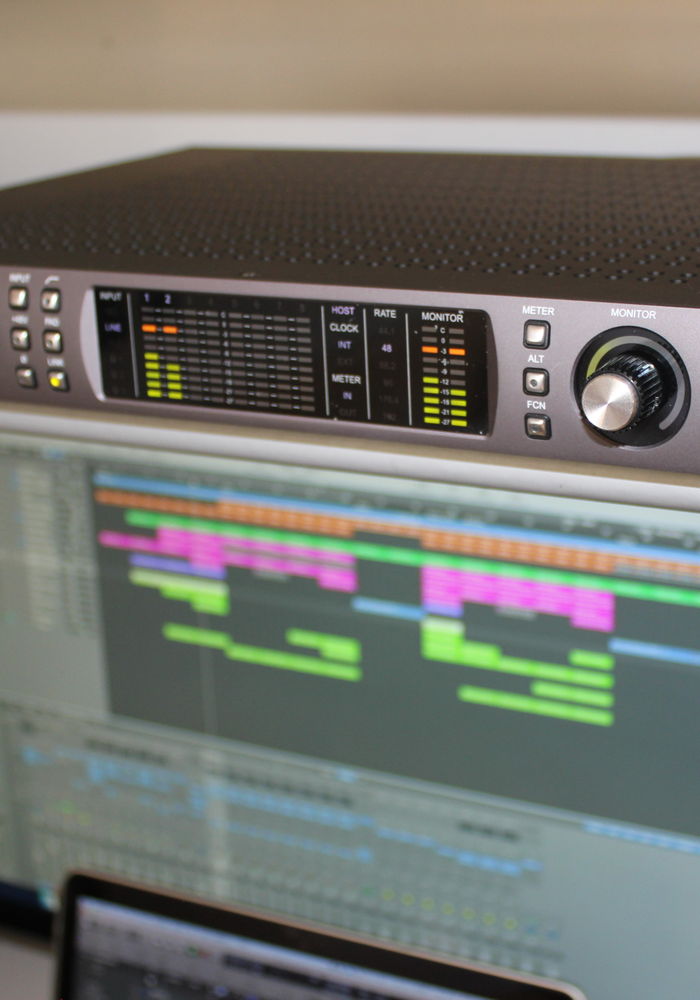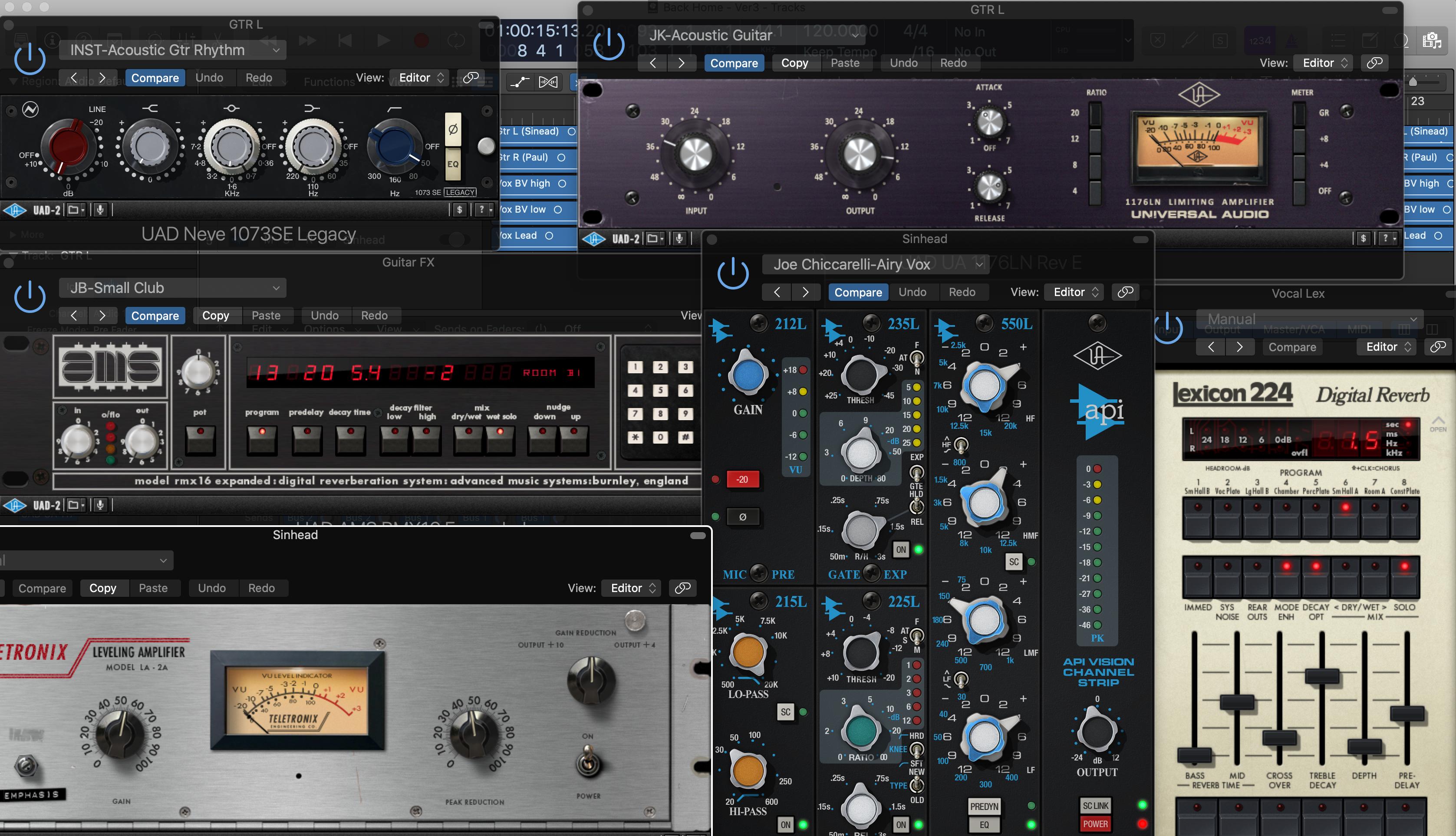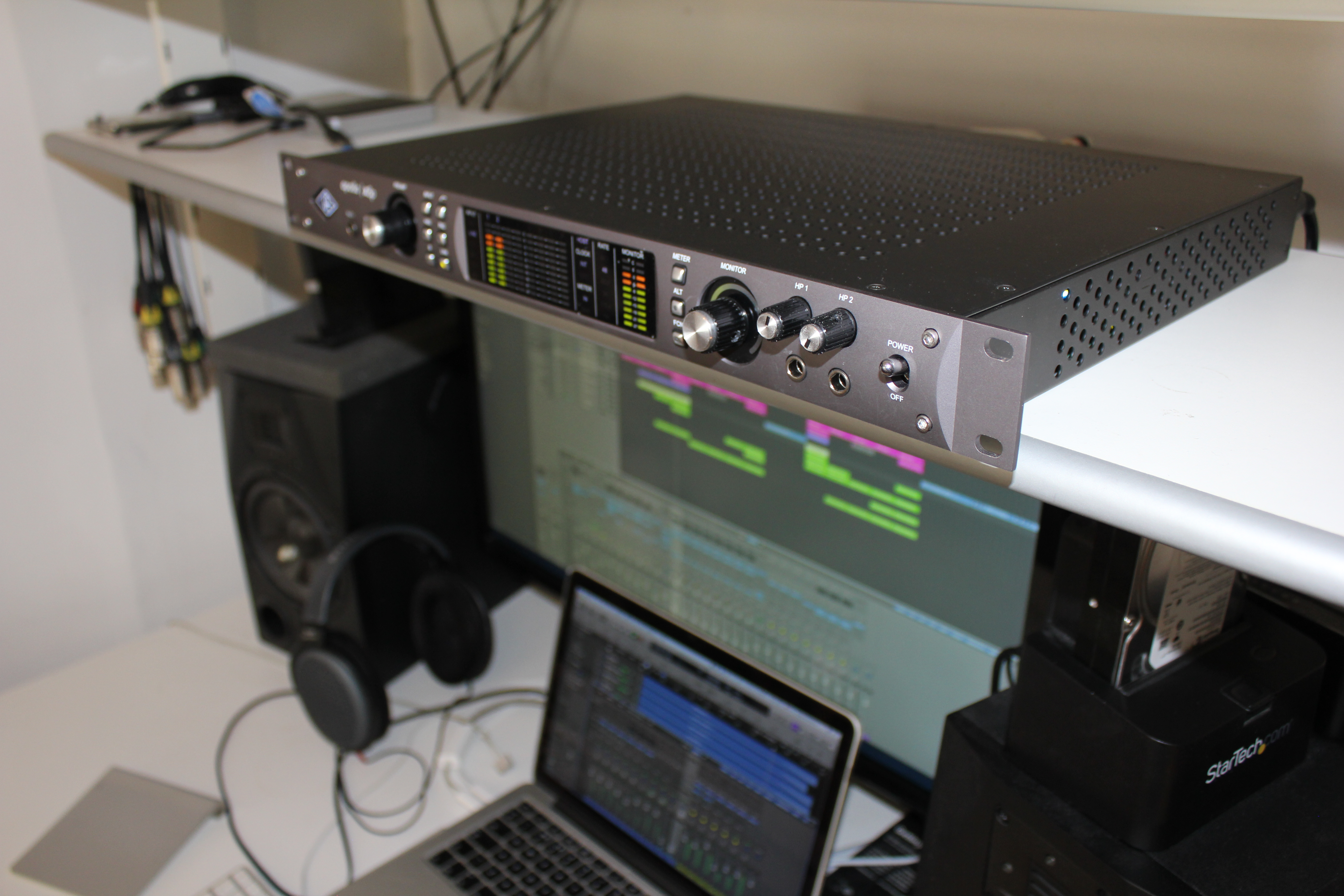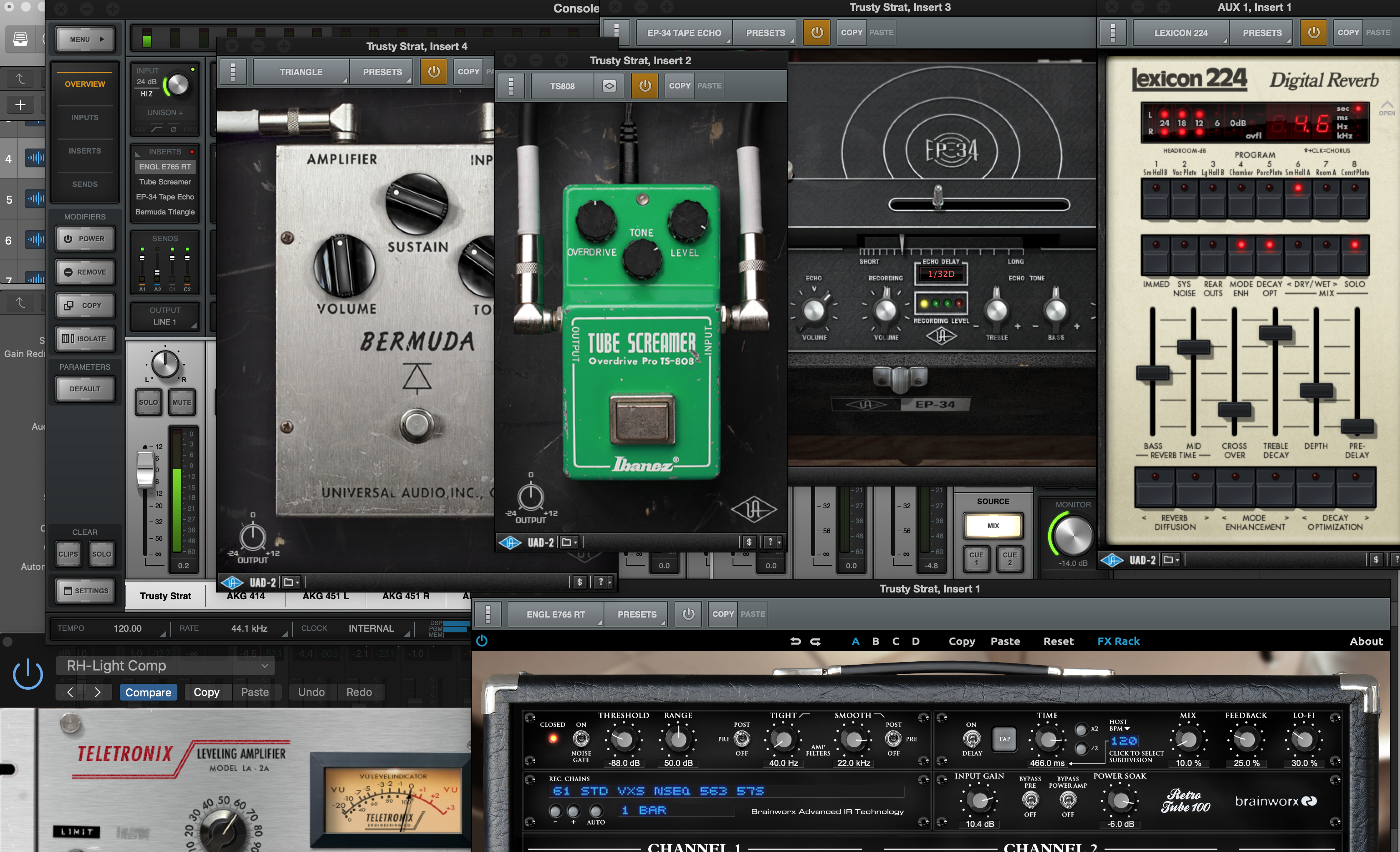Online, there's a wealth of reviews and technical information about UAD's Apollo x8p, but it was the list of plugins that initially caught my eye: suddenly I was back in the '80s at Master Rock Studios in Kilburn where a brief career as tea boy and cleaner introduced me to the world of high end gadgets.
I must have driven Steve Flood mad with questions about how to use the Urie, Fairchild, and dbx 160 compressors; the SSL desk, not to mention the plate and spring reverbs, and perhaps my favourite toy of all, the Lexicon 244. I longed for the day when I could take one of those on tour. So having played with a whole host of gear in the studio environment as opposed to the more inconsistent live arena, I'm well aware of how these original devices sounded and behaved in their analogue form.
The measure of any piece of equipment for me has to fill two criteria in this order: sounds great; easy to use. Anything else is down to aesthetics. Unboxing the x8p was easy: unit, power supply, mains cable, and a small card which simply says visit www.uaudio.com/register. So I created my account, connected to my MacBook Pro via thunderbolt 3, turned it on, and proceeded to download the UAD software.
Once it was all done, I restarted my mac, opened up Logic, there was a period while it initialised all the 200+ plugins, and I couldn't help but smile as their names, most of which are very familiar, flashed in front of my eyes. It came to a stop, and there was the interface in Logic preferences. How easy was that? I swapped my XLR cables out for a pair of jack to XLRs for my monitors, loaded a recent project which I had to copy across from my MacBook Pro, and hit the space bar on my laptop. Instant audio!
I've had a fair few interfaces over the years, and I have to say things just keep getting easier and easier to install and set up. The whole process from box opening to audio at speakers took under 20 minutes.
A compressor is one of those devices that you can never truly appreciate until you spend some time in a sealed control room just listening and playing. There is no right or wrong way to use a compressor or limiter – just do what sounds good. My all time favourite, luckily for me, was in most studios in London through the '80s, and was the Urie 1176. This box of tricks has a magic about it.
Technically it's a limiter; there's no threshold, just an input control that you use to drive the level up against the limiter, and output level, attack, and release - plus a number of push buttons by the VU which need to be played with as the various combinations produce a cacophony of effects.
The first time I heard one of these inserted on a vocal, the warmth of the low mid and the way in which the vocal came so close you could almost feel the spit in your face is unforgettable. The way it can turn an average drab snare into a powerful thing of beauty by opening up the attack speed is the other application for which this gem is truly memorable. I've used a couple of other emulations of this box, and while some are better than others, none have quite had that original magic.
The UAD 1176 has the Blue-stripe (Rev A), the Blackface (Rev E), and a modern 40th anniversary model with additional stuff I've never seen before. And it wasn't long before I was running out of tracks to try this on. The Blackface is genuinely difficult to tell apart from its original, and I couldn't stop grinning.






